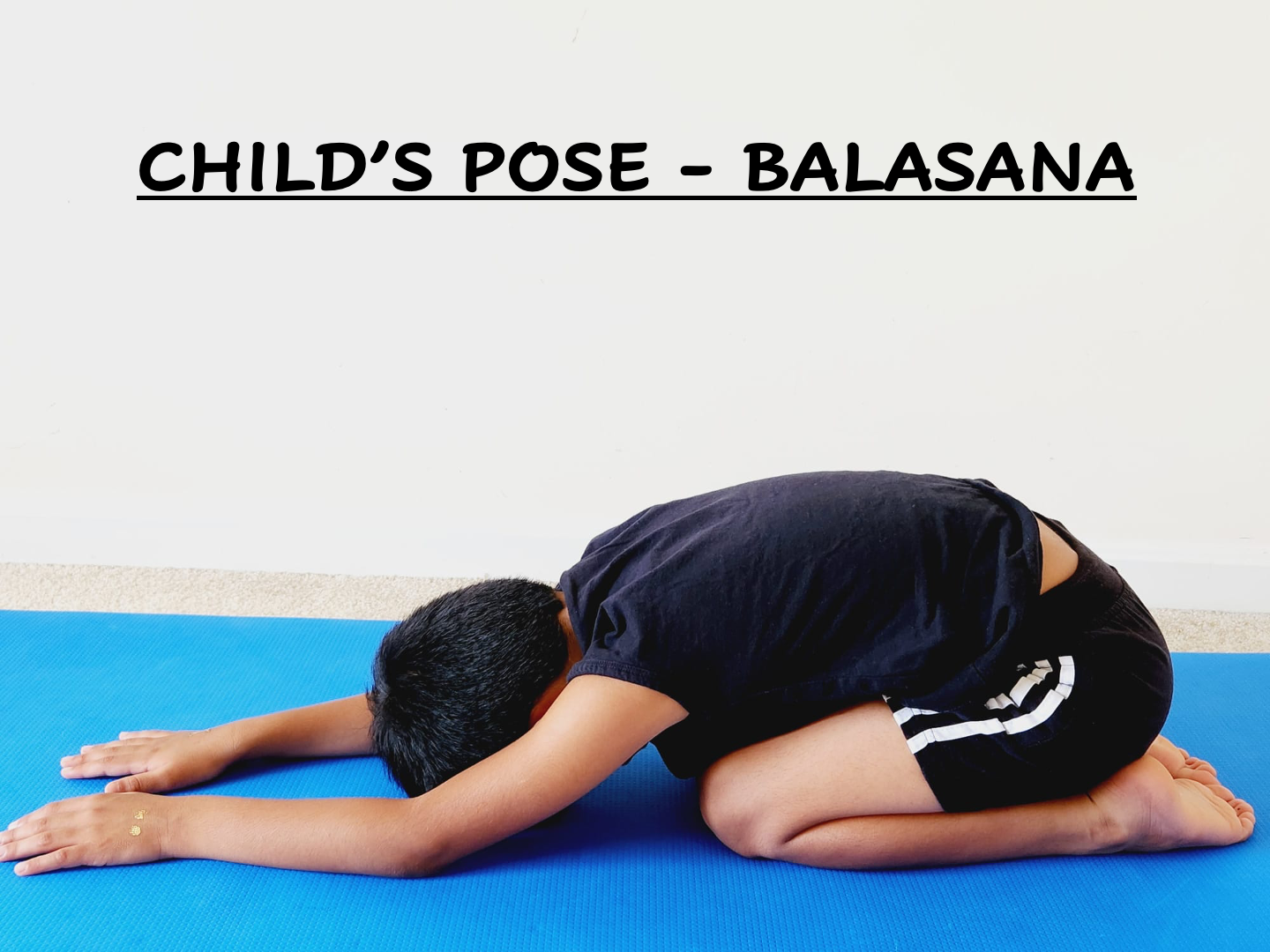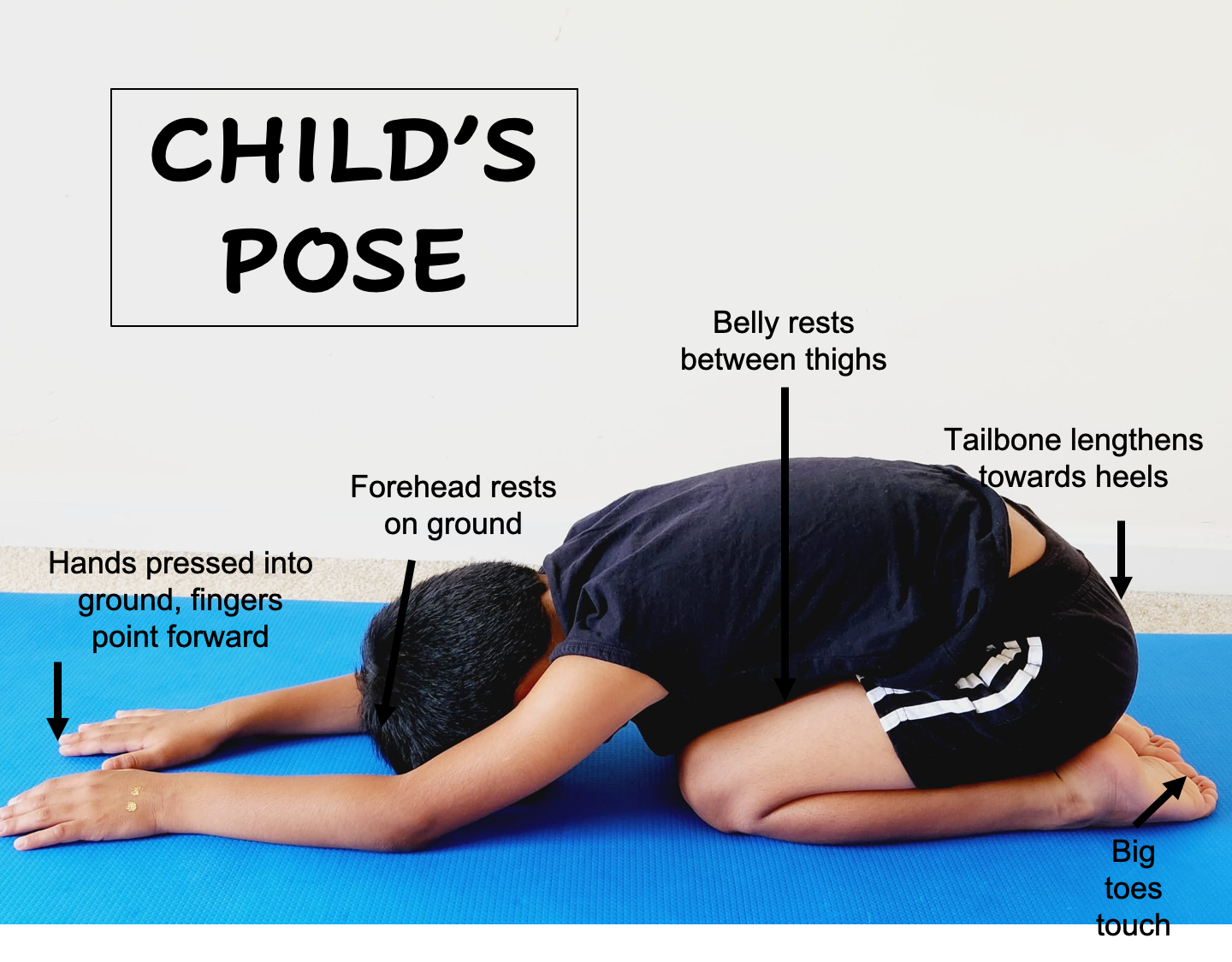BALASANA | CHILD’S POSE
Child’s Pose (Balasana) is yoga’s most important resting posture and it is a nice way to gently stretch various parts of your body. It’s a chance to stop what you are doing, reassess your position, reconnect with your breath, and prepare yourself to move forward.
Regular practice of child’s pose also teaches conscious exploration of the breath. As the front of the body releases onto the thighs, the frontal ribs and abdominal muscles become slightly compressed. This restriction allows for a deeper opening of the back of the torso as the lungs expand behind the body. As this happens, keeping the breath slow, long and steady allows for a new awareness of the breath’s path through the front and back of the body.
STEP BY STEP
- come to your hands and knees on the yoga mat
- spread your knees as wide as your mat, keeping the tops of your feet on the floor with the big toes touching
- rest your belly between your thighs and root your forehead to the floor. relax the shoulders, jaw and eyes. If it is not comfortable to place the forehead on the floor, rest it on a block or two stacked fists. There is an energy point at the center of the forehead in between the eyebrows that stimulates the vagus nerve and supports a “rest and digest” response. Finding a comfortable place for the forehead is key to gaining this soothing benefit
- stretch your arms in front of you with the palms toward the floor or bring your arms back alongside your thighs with the palms facing upwards. You can also stretch the arms forward with palms facing up for a shoulder release or try bending the elbows so that the palms touch and rest the thumbs at the back of the neck. In this position inch the elbows forward
- stay as long as you like, eventually reconnecting with the steady inhales and exhales of your breath
- to release the pose, gently use your hands to walk your torso upright to sit back on your heels
DURATIONS OF HOLD
- Beginners : 10 – 20 seconds
- Intermediate : 20 – 40 seconds
- Advanced: 1 minute – 5 minutes
BENEFITS
- Child’s Pose is a gentle stretch for the shoulders, back, hips, thighs, neck and ankles. It can help relieve back pain
- child’s pose can promote deep breathing, mindfulness and relaxation. Breathing practice can lower blood pressure and improve lung function and respiratory fitness
- it restores balance and equanimity to the body
- this asana helps release any tension in the chest. It is also why people trust yoga for better sleep
BE MINDFUL
- avoid child’s pose if you have a knee injury
- if you are pregnant, spread your legs wider and don’t press your stomach onto your thighs
- if you have a shoulder injury, keeping your arms by your side will provide the most support
- if you feel any pain, ease out of the pose
BEGINNER’S TIPS
- child’s pose is about being comfortable and rested as well as increasing flexibility in the hips and back
- many people find it more comfortable to take the knees wider (to the width of a yoga mat). This also creates more space if you have a larger belly or breasts
- use props or stack your fists to support your forehead if it doesn’t reach the floor comfortably
- use padding under your knees or ankles if you need to.
VARIATIONS
- if you have difficulty resting your buttocks on your heels, place a thickly folded blanket between the backs of your thighs and your calves
- spreading the knees wider apart can create a deeper stretch in the hips. only spread your knees as wide as it comfortable for you – do not strain or force your body to extend deeper in this pose
- pad the tops of your feet with a blanket. you can also fold your mat for extra padding under your feet
- rest your forehead on a firm pillow, bolster or stack of blankets.
- keeping your arms extended opens the shoulders and chest, but doing so makes the pose a bit more active
RELAX AND GO
Child’s Pose is a simple way to calm your mind, slow your breath and restore a feeling a of peace and safety. Practicing the pose before bedtime can help to release the worries of the day. Practicing in the morning can you help transition from sleeping to waking. Regularly integrating Child’s pose into your practice will create serenity and overall well-being both on and off the mat.

